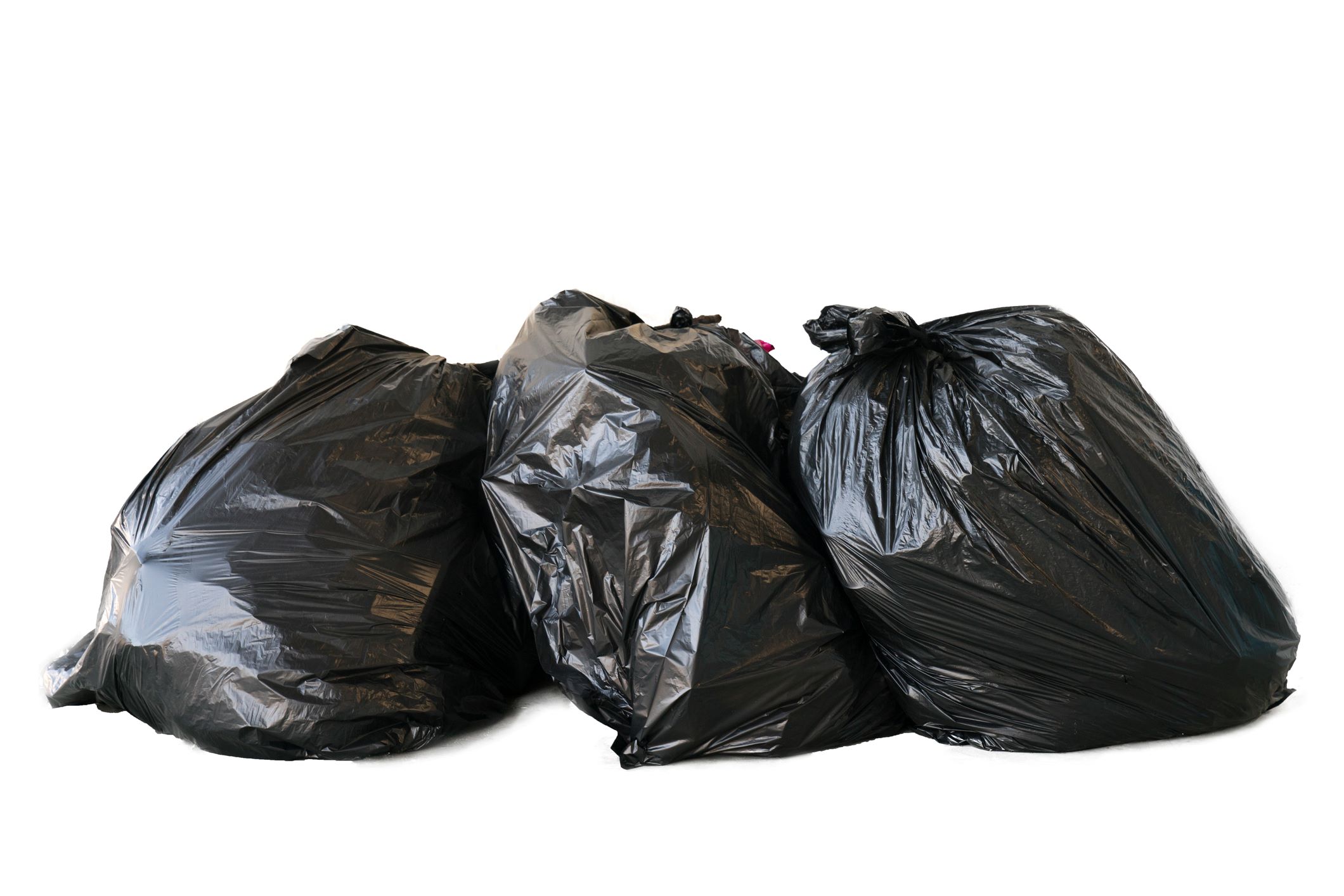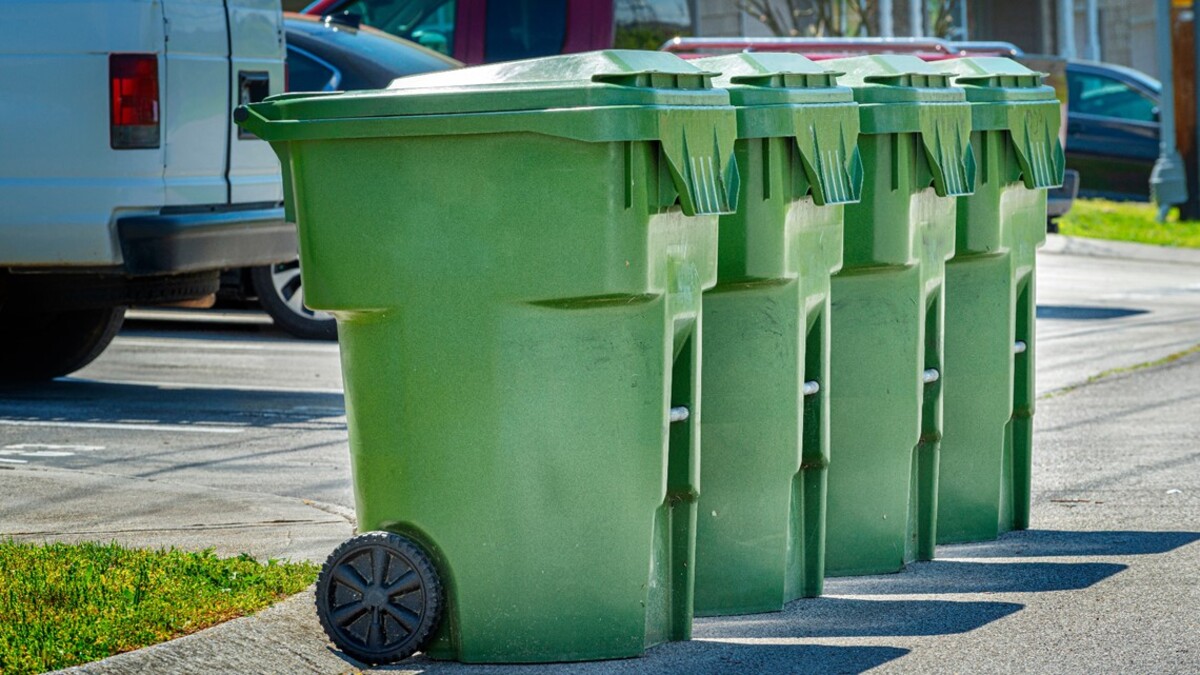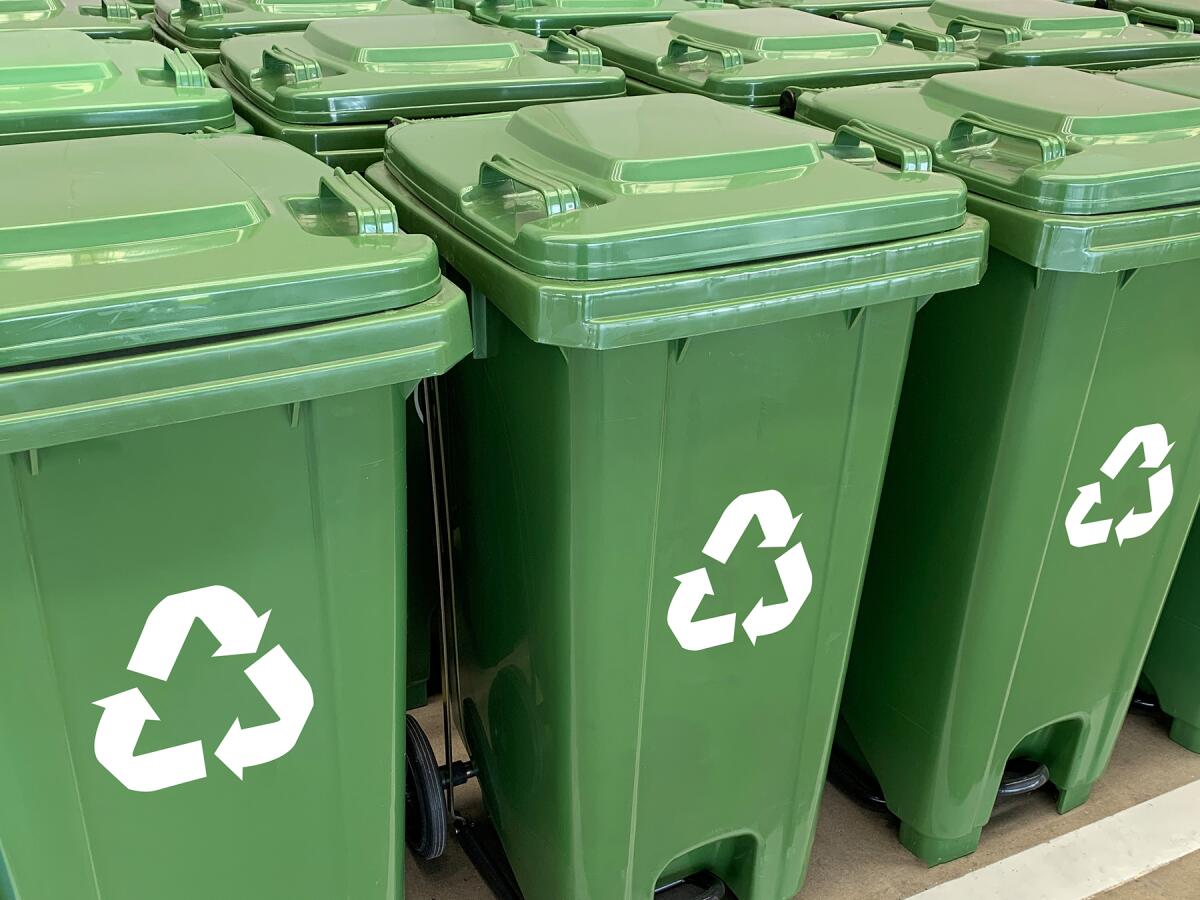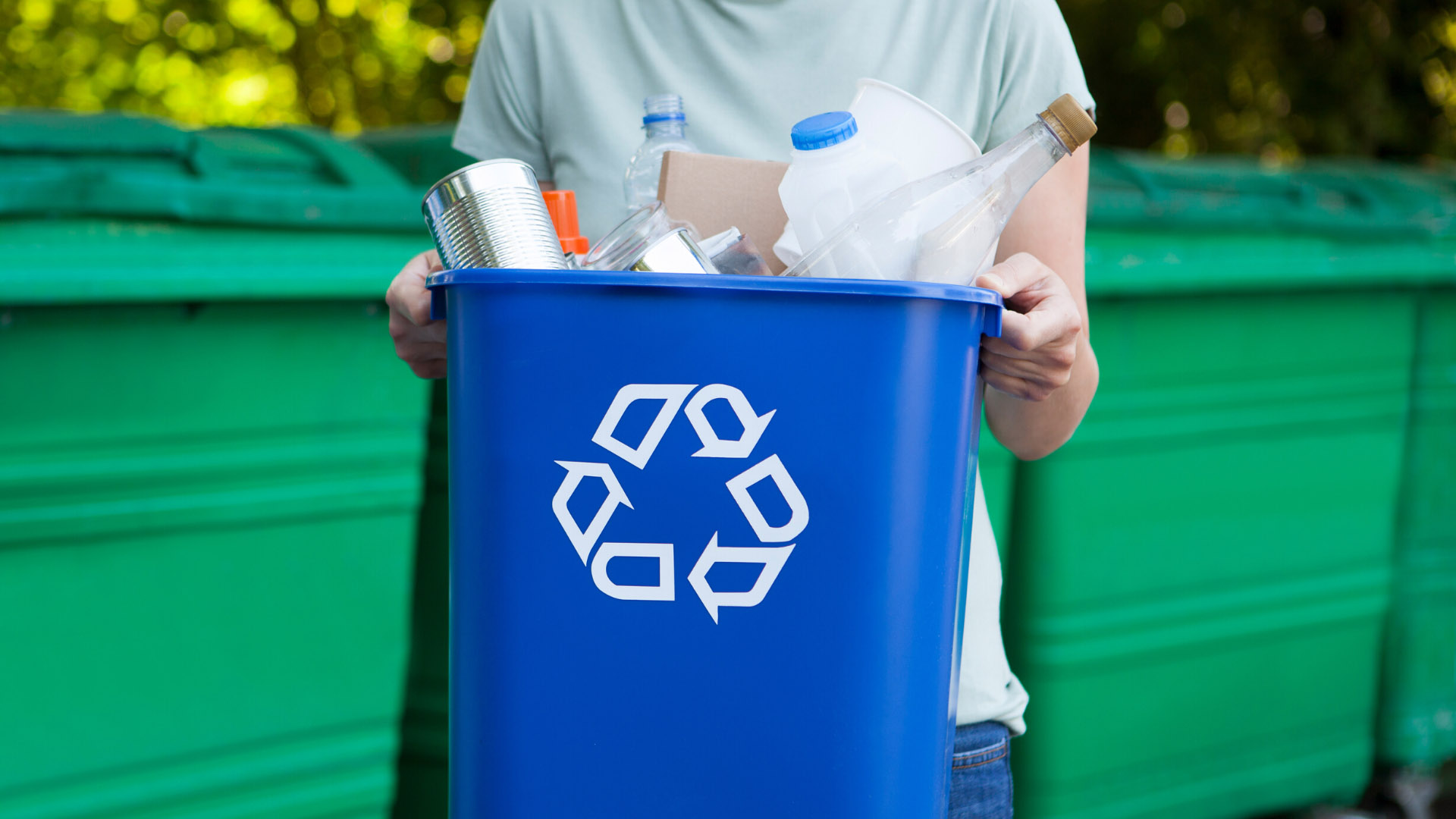Home>Furniture & Design>Interior Design Trends>What Percentage Of Glass Is Recycled


Interior Design Trends
What Percentage Of Glass Is Recycled
Modified: October 19, 2024
Discover the latest interior design trends and learn what percentage of glass is recycled. Stay informed and inspired with our insightful guide.
(Many of the links in this article redirect to a specific reviewed product. Your purchase of these products through affiliate links helps to generate commission for Storables.com, at no extra cost. Learn more)
Introduction
Glass is a versatile and widely used material that has been an integral part of human civilization for centuries. Its unique properties, such as transparency, durability, and recyclability, have made it a popular choice for various applications, including packaging, construction, and decoration. The process of recycling glass has gained significant attention in recent years due to its environmental benefits and potential to conserve natural resources.
Glass recycling is a sustainable practice that involves collecting, sorting, and processing waste glass to produce new glass products. This process not only reduces the amount of waste sent to landfills but also minimizes the extraction of raw materials, such as sand, soda ash, and limestone, which are used in the production of virgin glass. By giving new life to discarded glass items, recycling contributes to energy conservation and lowers carbon emissions associated with glass manufacturing.
The significance of glass recycling extends beyond environmental considerations. It also plays a crucial role in promoting a circular economy, where materials are reused and repurposed to minimize waste and maximize resource efficiency. As the global community increasingly prioritizes sustainability and waste reduction, the demand for innovative recycling solutions continues to grow, positioning glass recycling as a key component of a greener and more sustainable future.
In this article, we will delve into the intricacies of glass recycling, exploring the processes involved, the challenges faced, and the current state of glass recycling. Additionally, we will examine the benefits of glass recycling and propose strategies to increase its prevalence in waste management practices. By shedding light on the importance of glass recycling and its potential impact, we aim to inspire greater awareness and action towards building a more environmentally conscious society.
Key Takeaways:
- Glass recycling conserves natural resources, reduces waste, and lowers energy consumption, contributing to a more sustainable and eco-friendly approach to waste management.
- By increasing public awareness, investing in infrastructure, and fostering innovation, communities can elevate glass recycling rates, paving the way for a greener and more sustainable future.
The Process of Glass Recycling
Glass recycling involves a series of intricate steps that transform discarded glass into reusable materials, contributing to a more sustainable and eco-friendly approach to waste management. The process begins with the collection of used glass items, such as bottles, jars, and other glass packaging, from various sources, including households, businesses, and recycling centers. Once collected, the glass is transported to recycling facilities, where it undergoes a systematic procedure to be repurposed into new products.
-
Collection and Sorting: Upon arrival at the recycling facility, the collected glass is sorted based on color to ensure that clear, green, and brown glass are processed separately. This initial sorting stage is crucial as it prevents contamination and allows for more efficient recycling.
-
Cleaning and Crushing: After sorting, the glass undergoes a thorough cleaning process to remove any impurities, such as labels, caps, and other non-glass materials. Once cleaned, the glass is crushed into small pieces known as cullet. Crushing the glass into cullet not only reduces its volume for transportation but also prepares it for the subsequent stages of the recycling process.
-
Melting and Refining: The cullet is then melted in a furnace at high temperatures, typically exceeding 2,600 degrees Fahrenheit. During the melting process, any remaining impurities are removed, resulting in molten glass that can be molded and shaped into new products. This molten glass can be used to create a wide range of items, including new bottles, fiberglass insulation, and decorative glassware.
-
Forming New Products: Once the molten glass is refined, it is shaped into new products using various techniques, such as molding, blowing, or pressing. This stage allows the recycled glass to be transformed into a diverse array of items, catering to different industry needs and consumer demands.
-
Distribution and Utilization: The newly formed glass products are then distributed to manufacturers and businesses, where they are utilized in the production of a wide range of goods. From beverage containers to construction materials, recycled glass finds its way into numerous applications, contributing to the circular economy and reducing the reliance on virgin materials.
The process of glass recycling exemplifies the potential for sustainable practices to mitigate environmental impact and conserve valuable resources. By embracing the principles of recycling and reusing, the lifecycle of glass is extended, fostering a more sustainable and responsible approach to material consumption and waste management.
Challenges in Glass Recycling
Glass recycling, despite its numerous environmental benefits, is not without its challenges. Understanding and addressing these obstacles is crucial to furthering the advancement of glass recycling practices and maximizing its positive impact on the environment.
-
Contamination and Sorting: One of the primary challenges in glass recycling is the presence of contamination in collected glass. Labels, caps, and other non-glass materials often find their way into the recycling stream, complicating the sorting process and potentially compromising the quality of the recycled glass. Efficient sorting and cleaning mechanisms are essential to mitigate contamination and ensure that the recycled glass meets industry standards.
-
Color Separation: Glass comes in various colors, such as clear, green, and brown, each requiring separate processing to maintain the integrity of the recycled material. The need for meticulous color separation adds complexity to the recycling process and demands specialized equipment and facilities to handle different glass types effectively.
-
Transportation and Logistics: The transportation of collected glass to recycling facilities can pose logistical challenges, especially in regions with limited recycling infrastructure. The cost and energy associated with transporting heavy glass materials over long distances can impact the overall efficiency of the recycling process.
-
Consumer Participation and Education: Encouraging widespread consumer participation in glass recycling programs and fostering awareness about the importance of proper glass disposal are ongoing challenges. Educating the public about the significance of recycling glass and the impact of their actions on the environment is essential for increasing recycling rates and reducing contamination in the glass waste stream.
-
Market Demand and End Markets: The demand for recycled glass products and viable end markets for recycled glass materials are crucial factors in sustaining glass recycling efforts. Establishing strong market demand for recycled glass encourages investment in recycling infrastructure and incentivizes the collection and processing of glass waste.
-
Innovation and Technology: Advancements in recycling technology and innovation are essential for overcoming the challenges associated with glass recycling. Developing more efficient sorting methods, improving glass cleaning processes, and enhancing the overall recycling infrastructure are critical for streamlining the glass recycling supply chain.
Addressing these challenges requires a collaborative effort involving government entities, recycling facilities, manufacturers, and the public. By recognizing and actively working to overcome these obstacles, the glass recycling industry can continue to evolve and thrive, contributing to a more sustainable and circular approach to resource management.
Benefits of Glass Recycling
Glass recycling offers a myriad of compelling benefits that extend beyond waste reduction, making it a pivotal component of sustainable resource management. By embracing glass recycling practices, individuals, businesses, and communities contribute to a range of positive environmental, economic, and social outcomes.
Environmental Impact
Recycling glass significantly reduces the strain on natural resources, as it lessens the demand for raw materials used in glass production. By incorporating recycled glass, known as cullet, into the manufacturing process, the consumption of sand, soda ash, and limestone is minimized, conserving these finite resources and preserving natural ecosystems. Moreover, glass recycling plays a crucial role in energy conservation, as the melting of cullet requires lower temperatures compared to the production of virgin glass, leading to reduced energy consumption and lower greenhouse gas emissions.
Read more: What Can Glass Be Recycled Into
Waste Reduction and Landfill Diversion
The recycling of glass diverts substantial volumes of waste from landfills, alleviating the burden on waste management infrastructure and reducing the environmental impact of landfill disposal. Glass, known for its durability and non-biodegradable nature, can persist in landfills for centuries, occupying valuable space and posing environmental hazards. By recycling glass, these adverse effects are mitigated, and the lifespan of landfills is extended, promoting more sustainable waste management practices.
Circular Economy and Resource Efficiency
Glass recycling embodies the principles of a circular economy, where materials are reused and repurposed to minimize waste and maximize resource efficiency. By reintroducing recycled glass into the production cycle, the lifecycle of glass is extended, fostering a closed-loop system that reduces the need for continuous extraction of raw materials. This approach not only conserves resources but also minimizes the environmental impact associated with the extraction and processing of virgin materials, aligning with the broader goals of sustainable development and responsible resource utilization.
Economic Opportunities and Job Creation
The glass recycling industry contributes to economic growth and job creation, offering opportunities for employment in collection, processing, and manufacturing. Additionally, the demand for recycled glass materials stimulates market activity and investment in recycling infrastructure, fostering a robust and sustainable market for recycled glass products. This economic vitality further underscores the value of glass recycling as a driver of local and global prosperity.
Community Engagement and Environmental Stewardship
Engaging in glass recycling initiatives fosters a sense of environmental stewardship and community responsibility. By participating in recycling programs and advocating for sustainable practices, individuals and organizations actively contribute to the well-being of their communities and the planet. This collective effort not only promotes environmental awareness but also instills a culture of responsible consumption and waste management, shaping a more conscientious and environmentally conscious society.
In summary, the benefits of glass recycling are multifaceted, encompassing environmental preservation, waste reduction, resource efficiency, economic prosperity, and community engagement. Embracing glass recycling as a fundamental practice aligns with the principles of sustainability and paves the way for a more resilient and harmonious relationship between humanity and the environment.
Read more: Why Is Glass No Longer Recyclable
Current Percentage of Glass Recycling
The current percentage of glass recycling serves as a critical indicator of the progress and impact of glass recycling initiatives on a global scale. While the recycling rates for materials such as paper, aluminum, and plastic have garnered significant attention, the status of glass recycling is equally pivotal in assessing the overall sustainability of waste management practices.
As of the latest available data, the percentage of glass recycling varies across different regions and countries, influenced by factors such as infrastructure, public awareness, and regulatory frameworks. In the United States, for instance, the Environmental Protection Agency (EPA) reports that the national recycling rate for glass containers stands at approximately 33%. This figure reflects the proportion of glass containers that are recycled out of the total amount generated, illustrating the extent to which glass recycling has been integrated into the waste management landscape.
In contrast, European countries have made substantial strides in glass recycling, with several nations achieving recycling rates well above 70%. Germany, a leader in recycling practices, boasts an impressive glass recycling rate of over 90%, demonstrating the efficacy of robust recycling infrastructure and public engagement in driving high recycling performance.
The variation in glass recycling percentages underscores the influence of diverse factors, including the availability of recycling facilities, collection systems, consumer participation, and government policies. Regions with well-established recycling infrastructure and comprehensive collection programs tend to exhibit higher recycling rates, indicating the pivotal role of supportive frameworks in promoting sustainable waste practices.
Despite the progress in glass recycling rates, there remains ample room for improvement, particularly in regions where recycling infrastructure is less developed. Enhancing public education and engagement, investing in advanced recycling technologies, and fostering collaboration among stakeholders are essential strategies for elevating glass recycling percentages and advancing towards a more circular and resource-efficient economy.
The current percentage of glass recycling serves as a barometer of our collective commitment to environmental stewardship and sustainable resource management. By monitoring and striving to elevate these percentages, we can work towards a future where glass recycling plays an even more substantial role in conserving natural resources, reducing waste, and mitigating the environmental impact of material consumption.
Strategies to Increase Glass Recycling
Enhancing glass recycling rates requires a multifaceted approach that encompasses targeted interventions, collaborative partnerships, and innovative solutions. By implementing strategic initiatives aimed at bolstering glass recycling, communities, businesses, and governments can drive meaningful progress towards a more sustainable and circular economy.
1. Public Awareness and Education
Raising awareness about the importance of glass recycling and educating the public on proper disposal practices are fundamental strategies for increasing recycling rates. Public outreach campaigns, educational programs in schools, and community engagement initiatives can effectively convey the environmental benefits of glass recycling, encouraging individuals to actively participate in recycling efforts.
2. Infrastructure Investment
Investing in robust recycling infrastructure, including collection systems, sorting facilities, and processing centers, is pivotal for streamlining the glass recycling supply chain. By expanding and modernizing recycling infrastructure, communities can improve the efficiency and accessibility of glass recycling, making it more convenient for individuals and businesses to participate in recycling programs.
Read more: Who Buys Glass For Recycling
3. Incentivizing Recycling Behavior
Implementing incentive programs, such as deposit-refund systems for glass containers, can incentivize recycling behavior and promote higher collection rates. By offering financial incentives or rewards for returning glass items for recycling, individuals are motivated to engage in recycling practices, leading to increased recovery of glass materials and reduced waste generation.
4. Collaborative Partnerships
Fostering partnerships between government agencies, recycling facilities, businesses, and nonprofit organizations is essential for driving collective action towards increasing glass recycling. Collaborative initiatives can facilitate the development of comprehensive recycling strategies, leverage resources, and promote knowledge sharing to optimize recycling processes and infrastructure.
5. Innovation in Recycling Technology
Advancing recycling technology and innovation plays a crucial role in overcoming barriers to glass recycling. Research and development efforts focused on improving glass sorting techniques, enhancing cleaning processes, and developing new applications for recycled glass contribute to the efficiency and viability of glass recycling, paving the way for increased recycling rates.
6. Regulatory Support and Policy Frameworks
Enacting supportive policies, such as mandatory recycling requirements, extended producer responsibility regulations, and procurement preferences for recycled materials, creates a conducive environment for advancing glass recycling. Regulatory measures can drive industry compliance, stimulate investment in recycling infrastructure, and establish clear guidelines for sustainable waste management practices.
By implementing these strategic approaches, communities and stakeholders can work collaboratively to elevate glass recycling rates, reduce the environmental impact of glass waste, and contribute to the establishment of a more sustainable and resource-efficient society. Embracing these strategies fosters a collective commitment to environmental stewardship and positions glass recycling as a cornerstone of sustainable waste management practices.
Read more: Where To Recycle Glass Bottles
Conclusion
In conclusion, glass recycling stands as a beacon of sustainability, offering a multitude of environmental, economic, and social benefits. The intricate process of transforming discarded glass into reusable materials exemplifies the potential for circular resource management and underscores the importance of responsible waste practices. Despite the challenges inherent in glass recycling, including contamination, color separation, and logistical complexities, the collective efforts of individuals, communities, and organizations have propelled the advancement of glass recycling initiatives.
The current percentage of glass recycling, while varying across regions, serves as a testament to the progress made in integrating glass recycling into waste management systems. From the impressive recycling rates achieved in European countries to the ongoing efforts to elevate recycling percentages in other regions, the commitment to sustainable resource utilization is evident. However, there remains a compelling opportunity to further increase glass recycling rates through strategic interventions and collaborative endeavors.
By fostering public awareness and education, investing in modern recycling infrastructure, incentivizing recycling behavior, and embracing innovative technologies, communities can pave the way for a future where glass recycling plays an even more substantial role in conserving natural resources and reducing waste. Collaborative partnerships and supportive policy frameworks further reinforce the foundation for sustainable waste management practices, driving collective action towards a more circular and resource-efficient economy.
As we navigate towards a future defined by environmental stewardship and sustainable development, the significance of glass recycling cannot be overstated. Embracing the principles of a circular economy, promoting responsible consumption, and actively participating in recycling programs are integral to shaping a more resilient and harmonious relationship between humanity and the environment. The journey towards increased glass recycling rates is a collective endeavor, reflecting our shared commitment to preserving the planet for current and future generations.
In essence, the potential of glass recycling extends far beyond the act of repurposing glass materials. It embodies a profound ethos of sustainability, resource efficiency, and environmental consciousness, encapsulating the transformative power of responsible waste management. By championing the expansion of glass recycling and embracing its inherent benefits, we embark on a path towards a greener, more sustainable future, where the timeless elegance of glass converges with the enduring principles of environmental preservation.
Frequently Asked Questions about What Percentage Of Glass Is Recycled
Was this page helpful?
At Storables.com, we guarantee accurate and reliable information. Our content, validated by Expert Board Contributors, is crafted following stringent Editorial Policies. We're committed to providing you with well-researched, expert-backed insights for all your informational needs.












0 thoughts on “What Percentage Of Glass Is Recycled”